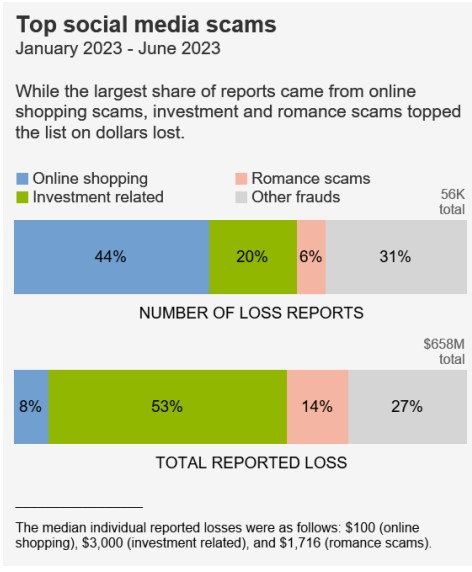Businesses love fads. And some enterprises love fraud.
From crypto, hula hoops, ESG, ED pills, and Beany Babies to Lava Lights and Pet Rocks, businesses have quickly adopted the latest shiny invention, process, or product and sprinted to copy it and bring it to market as soon as possible.
Nothing has changed. Today, there are new processes, products, and fads. Still, they are more complicated and high-level, and they travel faster into the consumer market due to social media and changes in journalism.
Today, if a business is legitimate, it has a clear path, but if it is shaded and wants to capitalize on the fad, it’s easier than ever to move into the grey area of fraud to lure customers.
To see this, you must visit Facebook, TikTok, or other social media outlets online. There, you will find the trends that today include pseudo-psychedelic mushrooms, Artificial Intelligence, Environmental and Social Governance (ESG) investment funds, erection pills, industrial cleaners, portable vacuum cleaners, hair restorer products, miracle kitchen degreasers, and vitamins that promise long life and vitality.
When delivering a service, an unscrupulous company can say they are offering the process, but they don’t have to change anything. This was when ESG (Environmental, Social, Governance) investing gained traction. Some investment firms said they were following this investment process but never instituted any implementation processes.
Government programs, like Medicare, are also a primary target for fraud. One reason is that Medicare is the fourth largest federal expenditure after defense, Social Security, and payments on the national debt. In a 1994 U.S. Senate Special Committee on Ageing hearing, experts said fraud cost 10% of the total Medicare and national healthcare budget, which 1994 cost $10 billion to $20 billion annually. States with high elderly populations, such as Florida, predominantly South Florida, are the primary sites for the fraud.
Product Fraud is Easier Than Ever
The enticement that brings people into viewing and buying these products is slick videos, wild, unsubstantiated claims, intentionally long and repetitive descriptions, and the easy checkout that takes your credit card quickly.
Online consumer fraud is big business. In 2021, the FBI’s Internet Crime Complaint Report (released on March 22, 2022) listed 847,376 complaints of suspected internet crime. This was a 7% increase from 2020, and the crimes resulted in losses of over $6.9 billion. According to the FBI Internet Crime Complaint Center, this translates into an average of 2,000 complaints per day,
The COVID pandemic was also an excellent opportunity for fraudsters. The potential for fraud was vast, and given the amount of money distributed, a 1% loss to fraud translates into $72 billion in fraud, according to CNBC.
These frauds continue old traditions. In the early 1920s, the radio became more popular as receiver prices dropped and more stations went on-air. Advertising was also cheap, so it attracted the attention of medicine tonic products and fake doctors who operated without many restrictions since states had limited regulatory authority over them.
One famous medical charlatan was John R. Brinkley, the famous “Goat Gland Man,” from Milford, Kansas, who earned his name by transplanting goat glands into the necks of older men to cure them of “sexual weakness.” Brinkley testified in one of his courtroom appearances that his income averaged $1 million annually. (This is the equivalent of $18 million in current dollars.) This was enough for him to own three yachts, a Texas mansion, 14 cars, and two fountains that spelled his name out in neon lights.
Fads and Frauds Go Unchecked
Fraud, considered a white-collar crime, is surging. According to the Federal Trade Commission, consumers reported losing more than $10 billion to fraud in 2023, marking the first time that fraud losses have reached that benchmark. This marks a 14% increase over reported losses in 2022.
 The FTC said (see chart) that the most significant categories of fraud were online shopping issues, the second most commonly reported fraud category, followed by prizes, sweepstakes, and lotteries; investment-related reports; and business and job opportunity scams. According to Kiplinger, a consumer lost an average of $180 in online shopping fraud.
The FTC said (see chart) that the most significant categories of fraud were online shopping issues, the second most commonly reported fraud category, followed by prizes, sweepstakes, and lotteries; investment-related reports; and business and job opportunity scams. According to Kiplinger, a consumer lost an average of $180 in online shopping fraud.
White-collar crime statistics found that insurance and financial fraud are the most common crimes. As of 2022, Florida had the highest number of convicted criminals for money laundering. Based on 2019 statistics, Miami ranked second in the U.S. with 4,237.27 white-collar crimes per 10,000 people. (Richmond, Va. was first.)
White-collar crimes are very profitable, and the chances of getting away unscathed by law enforcement are increasing. However, white-collar crime prosecutions decreased by 53.5% from 2011 to 2021. As of 2021, annual losses from white-collar crimes range from $426 billion to $1.7 trillion. The wide range of failures is due to the lack of prosecutions.
At the individual consumer level, fraud victims suffer embarrassment, disbelief, and shame about deception. According to the Miami Police Department, those are the main reasons why only an estimated 15% of the nation’s fraud victims report their situation to law enforcement. Even when frauds are reported, victims of credit card fraud have a one-in-1,000 chance of having the crime solved by police.
Those odds are inferior. So before you click the “purchase” button, verify that the seller is honest. Then, print a receipt and mark the purchase date on the calendar. A legitimate seller should send a shipping notice. If you don’t get a shipping note or another email stating that your purchase is in the mail, be prepared to call the credit card company to file a fraud complaint.











